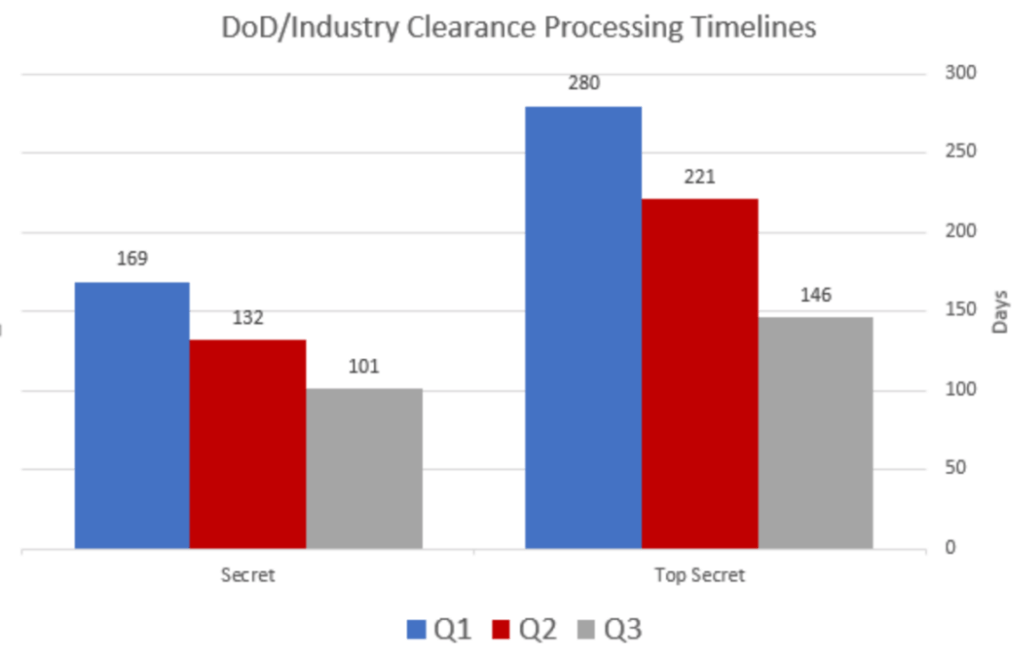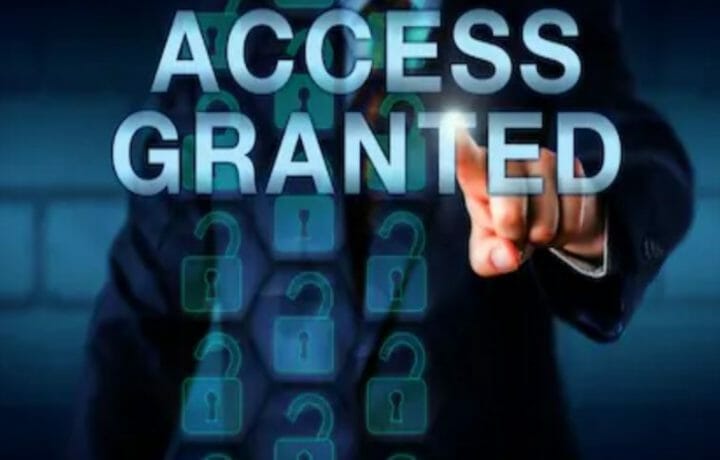Security clearance processing times continue to decline, despite concerns about the coronavirus potentially sidelining process improvements. Over the past several months, applicants have speculated that their security clearance applications could stall, as they work to perform previously simple tasks like finding a location to process electronic fingerprints. But it appears the teleworking background investigator workforce and already work-from-home-ready adjudicators have been able to make up for the hiccups, and continue to move security clearance processing times nearer to goal.

Secret clearance processing times for DoD/Industry are at 101 days for the fastest 90% of applicants, and Top Secret clearance processing times are 280 days. Both are well under half of what they were last year. The Intelligence Authorization Act for FY 2020 set goals for security clearance processing times of an ambitious 90 days for a Top Secret clearance and 30 days for a Secret clearance. That would make current Secret clearance processing times close to the time it currently takes just to obtain an interim security clearance, which hinges on completion of a basic background check and electronic fingerprint check.
A COVID-Ready Workforce
COVID-19 related issues would be more directly tied to increased difficulty in finding sources for verification, versus issues with investigators or adjudicators being able to perform their jobs remotely. The vast majority of background investigators already worked remotely, and adjudicators were also prepared for remote work. With workforces ready to work remotely, and the defense industry still actively onboarding new applicants and awarding new contracts, the security clearance investigation process has marched on.
Processing time improvements between Q2 and Q3 of 2020 were helped by significant improvement in adjudication timelines, specifically for Top Secret clearances. Disparity in adjudication processing timelines has continued to be a complaint. Shaving 20 days off of Top Secret adjudications is certainly a step in the right direction.




